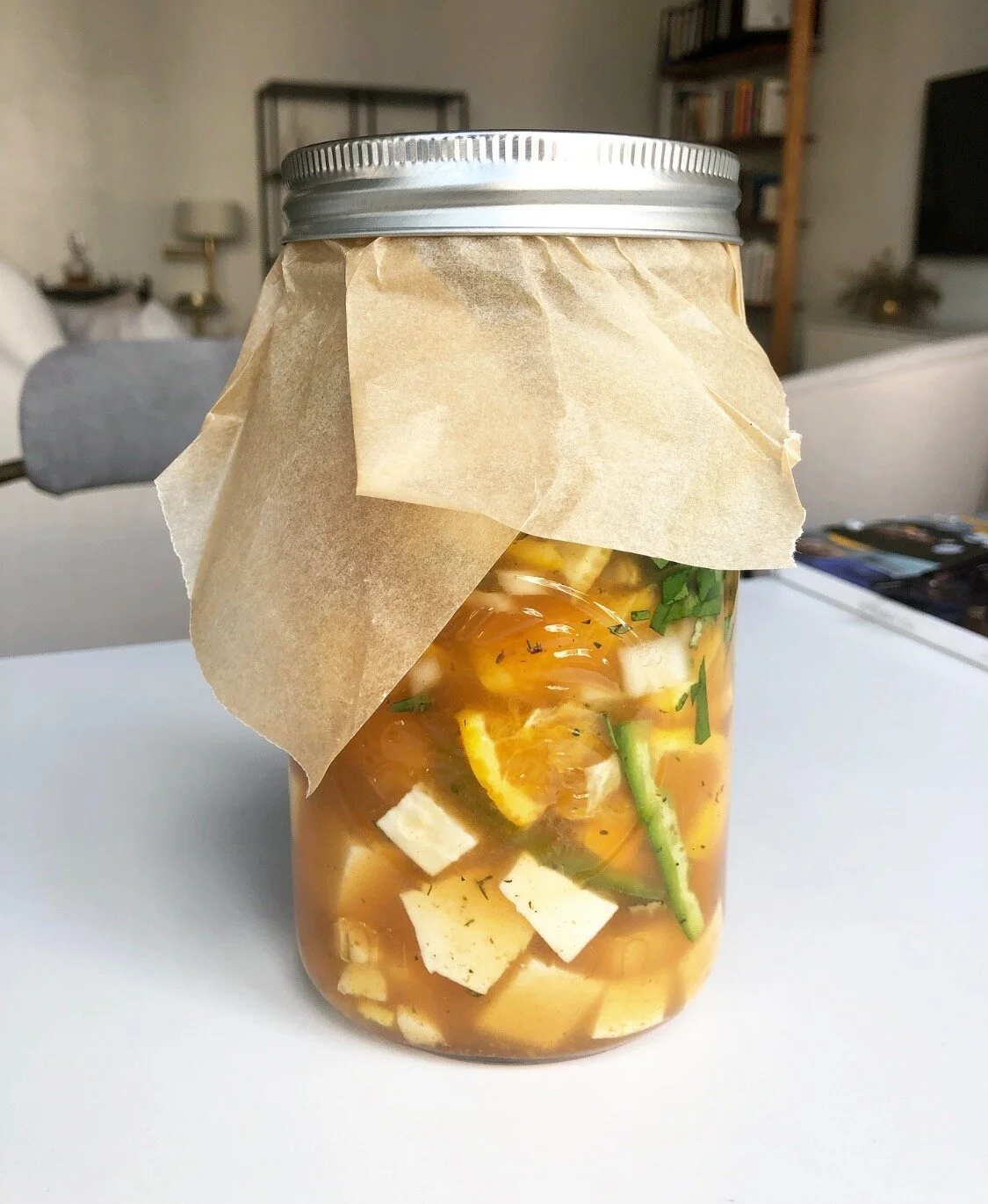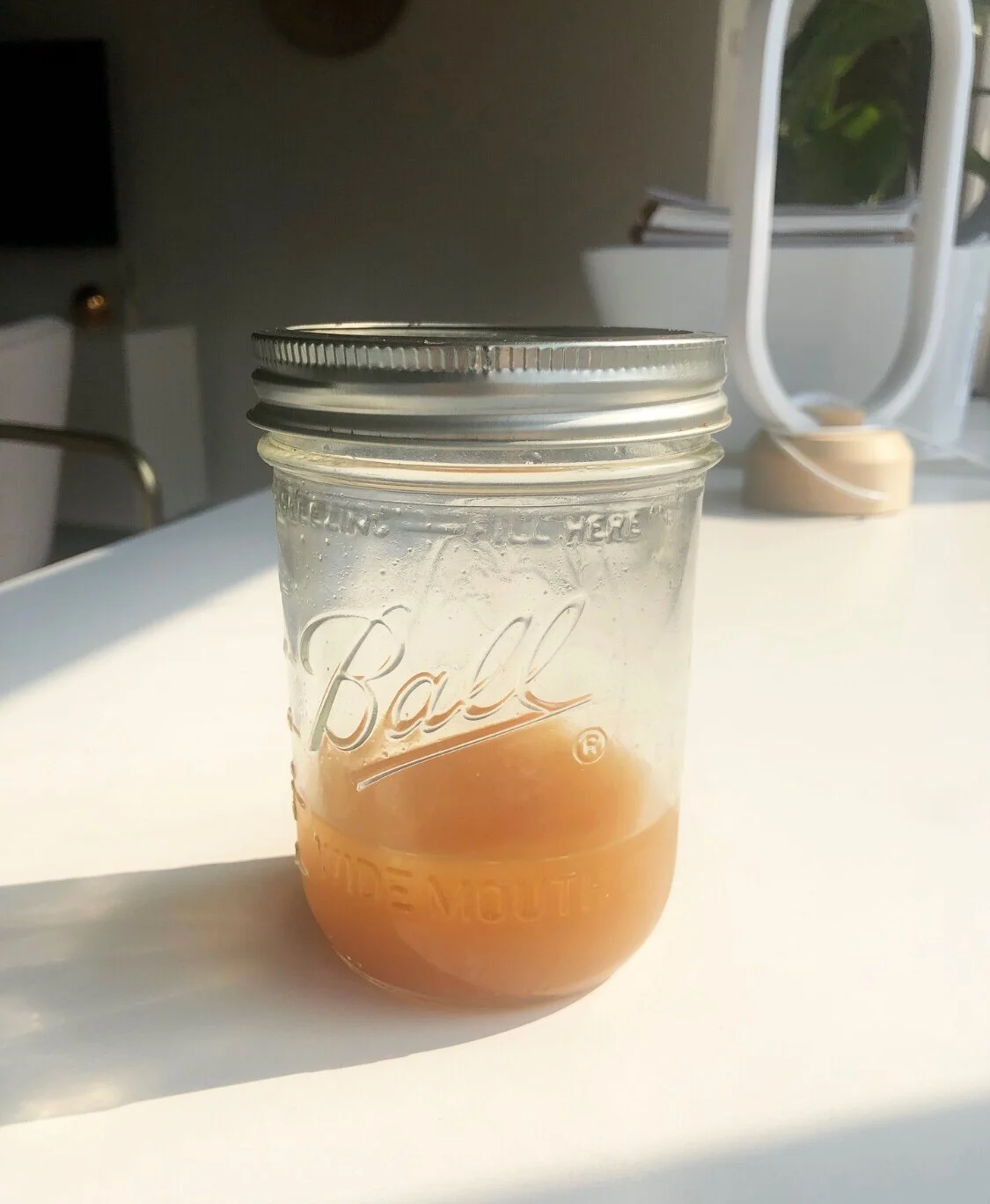Fire Cider
Being a student of a Naturopathic college is actually better than I expected it to be. Not only does Sonoran University focus on food as medicine, they don’t count calories like other clinical nutrition programs. They address other issues such as weight bias, nutrigenomics, and personalized nutrition. They also discuss economic disparities that affect diet, black livers matter, Asian hate, gender transitioning, environmental impacts. It’s INSANE. I am learning so much; it has been truly been the best choice my intuition guided me to.
One of the first assignments at the beginning of the class was to make fire cider, which is a tonic that is said to help with immune health. I had never heard of it before, but have intermittently taken apple cider vinegar for years for its proposed benefits. This fire cider has to sit to infuse for 3-4 weeks, and I was finally able to try the tonic that I made 4 weeks ago.
Let me just say that it’s fire, and I mean fire as in amazing. I am so grateful for this assignment because this is one that I’ll keep on deck. I feel less bloated after meals, and it’s just fun to make! I personally take a 2-ounce shot before dinner and can say that the minimal bloating that I sometimes experienced after meals has improved! I would start with 1 teaspoon and work up, since apple cider vinegar can be very strong, especially with all of these added components to the tonic.
I normally like to create my own recipes, but this one I 100% credit to Sonoran. I hope that you enjoy! For the nutrition junkies, I added a paragraph below with linked research articles.
Ingredients:
1/2 cup peeled and diced cubed horseradish
1/2 cup peeled and diced garlic (approximately 2 bulbs)
Crush first, then let sit for 15 minutes, then dice. Crushing it activates the enzyme in garlic that converts Allinin to Allicin, which gives us the health benefits.
1/2 cup peeled and diced onion (about 1 onion)
1/4 cup peeled and diced ginger root
1/4 cup peeled and diced turmeric root
1 habanero chile or jalapeño pepper, thinly sliced
1 orange, quartered and sliced crosswise
1 lemon, quartered and sliced crosswise
1/4 teaspoon cayenne powder (I used 1/2)
1/2 cup fresh copped parsley
2 tablespoons fresh chopped rosemary
2 tablespoons fresh chopped thyme
1 teaspoon black peppercorns
2-3 cups of raw, unfiltered apple cider vinegar
Recipe:
Place all of the ingredients into a 1 quart jar, packing them down as much as you can. Add apple cider vinegar ensuring it covers all the ingredients. Cover the jar with a piece of parchment paper and seal the metal lid over the parchment paper.
Let the jar sit in a cool, dark place for 3-6 weeks, shaking daily or at least once a week.
After 3-6 weeks, use a cheesecloth or a strainer and strain the vinegar into a clean class. For added sweetness, you can add 1/4 cup honey or pomegranate seeds to the strained mixute, but I liked it just the way it was.
Drink 1-2 tablespoons daily or when needed. Fire cider can be stored in the refrigerator for up to 1 year, just shake before pouring.
Nutritional blurb:
Fire cider is the steeping of several ingredients that have a variety of benefits, including garlic, ginger, turmeric, cayenne, parsley, thyme, pepper, citrus fruits, and chili. There are several recipes out there with more or less of these ingredients. I won’t go into too much detail on the health benefits of each of these foods, but they are abundant.
Most of the antimicrobial and anti-glycemic effects are credited to the apple cider vinegar itself, which is the main part of the tonic (1) (2). Allicin, the main constituent in garlic, has anti-bacterial and anti-viral effects (3).
The coumarins in parsley, the curcumin in turmeric in combination with the piperine in the black pepper, and the glucosinolates and sulfur compounds in horseradish all have strong anti-inflammatory effects and support many metabolic processes that benefit our overall health and help defend us against disease/infection (4) (5) (6).
The capsaicin in the pepper promotes vascular and metabolic health (7).
Foods are so fun and give us so much! They are truly magical.
References:
(1) Yagnik D, Serafin V, J Shah A. Antimicrobial activity of apple cider vinegar against Escherichia coli, Staphylococcus aureus and Candida albicans; downregulating cytokine and microbial protein expression. Sci Rep. 2018;8(1):1732. Published 2018 Jan 29. doi:10.1038/s41598-017-18618-x
(2) Johnston CS, Gaas CA. Vinegar: medicinal uses and antiglycemic effect. MedGenMed. 2006;8(2):61. Published 2006 May 30.
(3) Bayan L, Koulivand PH, Gorji A. Garlic: a review of potential therapeutic effects. Avicenna J Phytomed. 2014;4(1):1-14.
(4) Mahmood S, Hussain S, Malik F. Critique of medicinal conspicuousness of Parsley(Petroselinum crispum): a culinary herb of Mediterranean region. Pak J Pharm Sci. 2014;27(1):193-202.
(5) Hewlings SJ, Kalman DS. Curcumin: A Review of Its Effects on Human Health. Foods. 2017;6(10):92. Published 2017 Oct 22. doi:10.3390/foods6100092
(6) Herz C, Tran HT, Márton MR, et al. Evaluation of an Aqueous Extract from Horseradish Root (Armoracia rusticana Radix) against Lipopolysaccharide-Induced Cellular Inflammation Reaction. Evid Based Complement Alternat Med. 2017;2017:1950692. doi:10.1155/2017/1950692
(7) McCarty MF, DiNicolantonio JJ, O'Keefe JH. Capsaicin may have important potential for promoting vascular and metabolic health. Open Heart. 2015;2(1):e000262. Published 2015 Jun 17. doi:10.1136/openhrt-2015-000262


